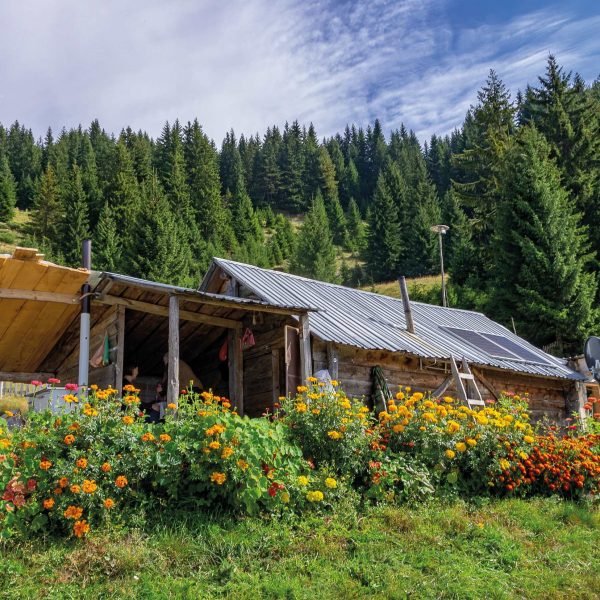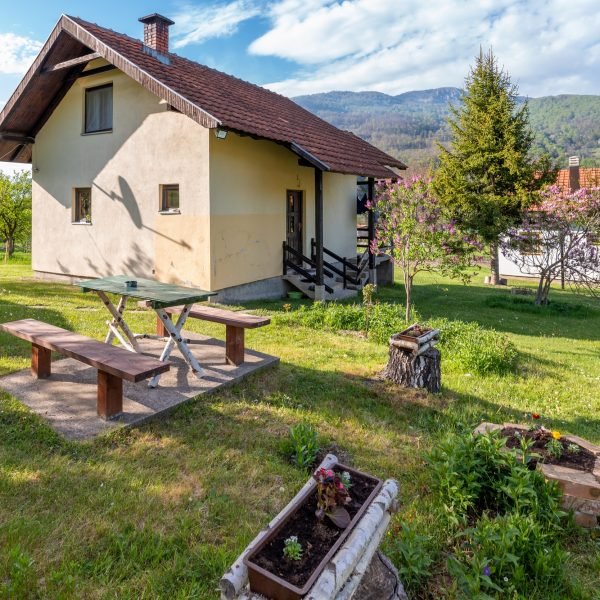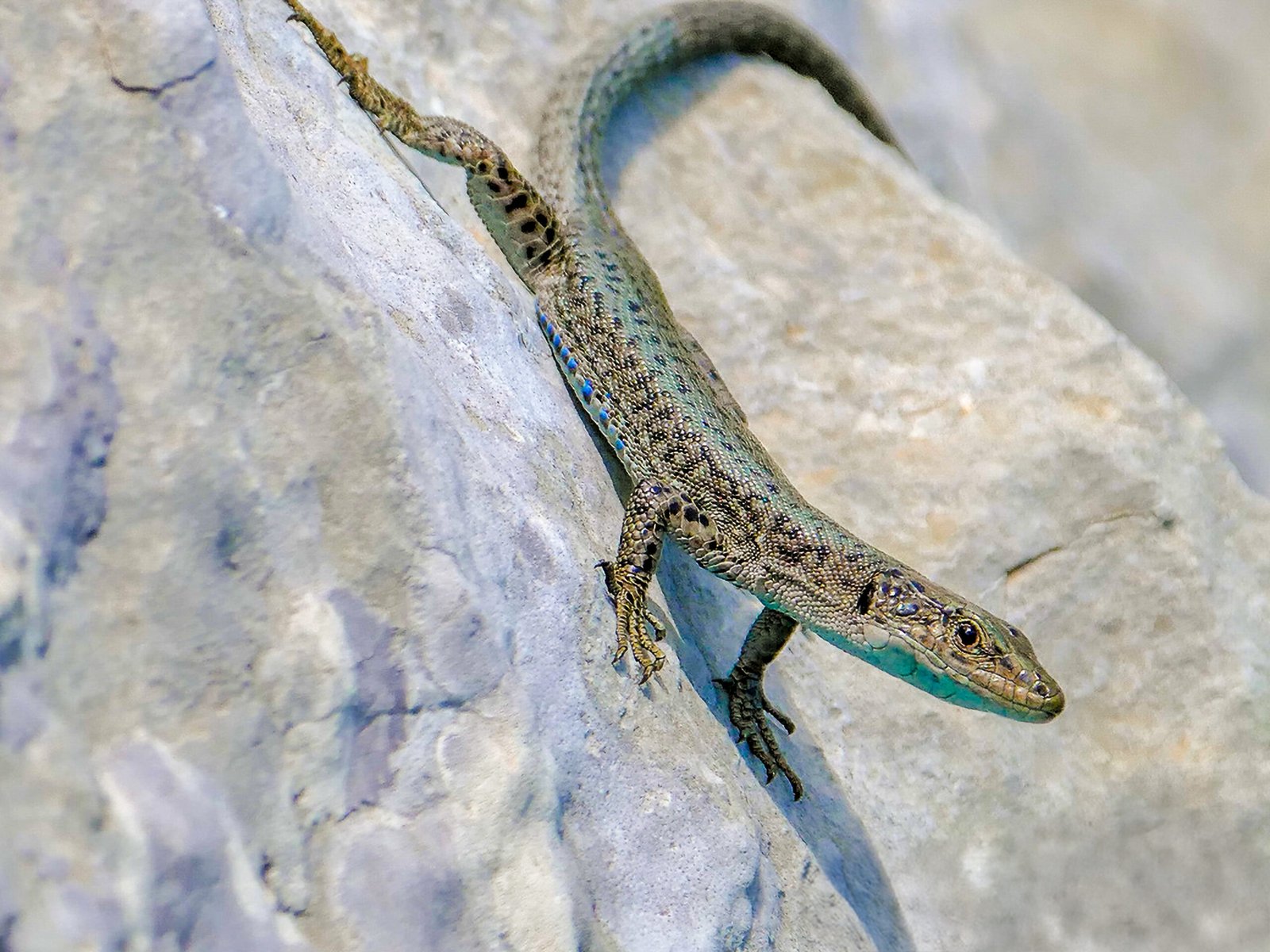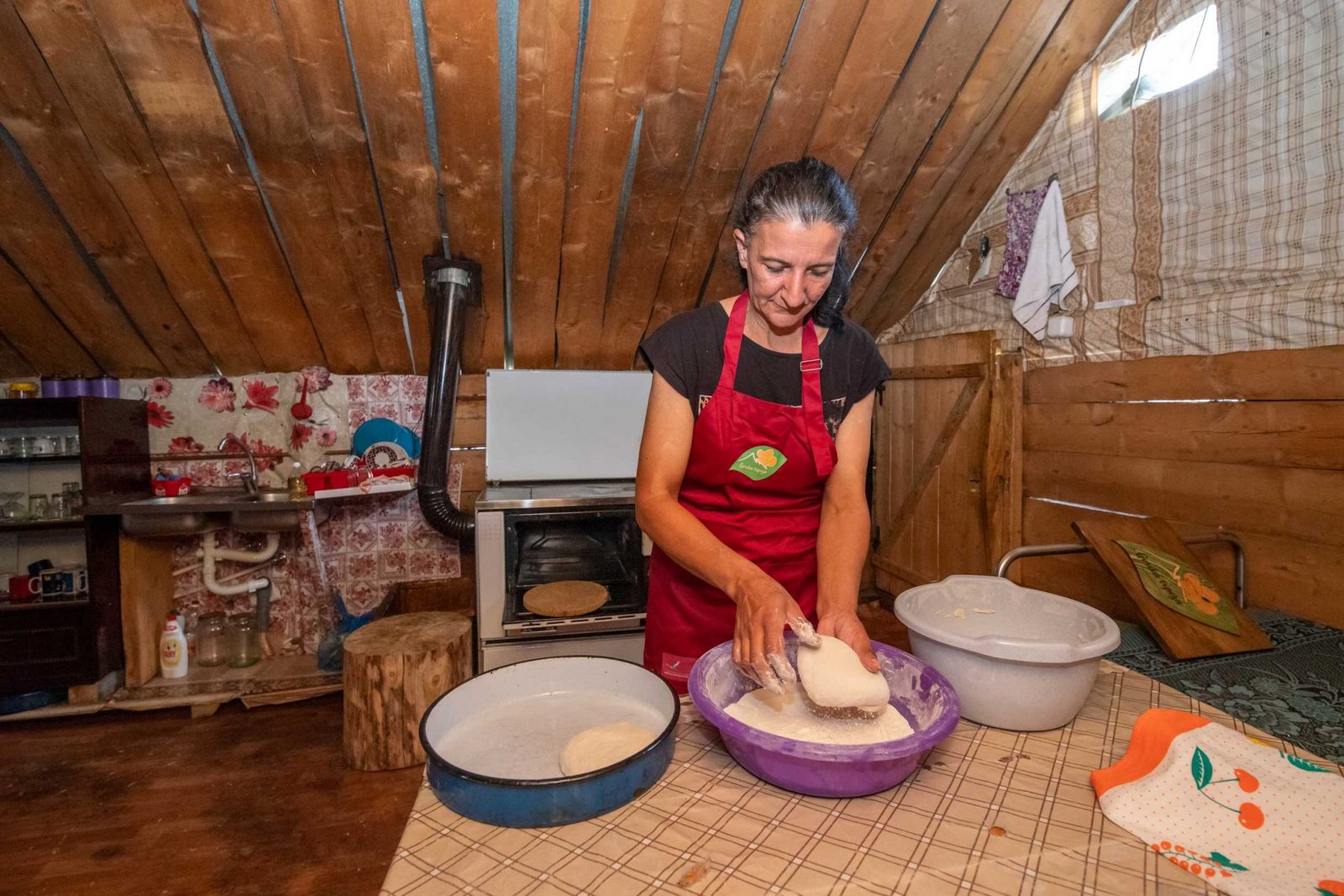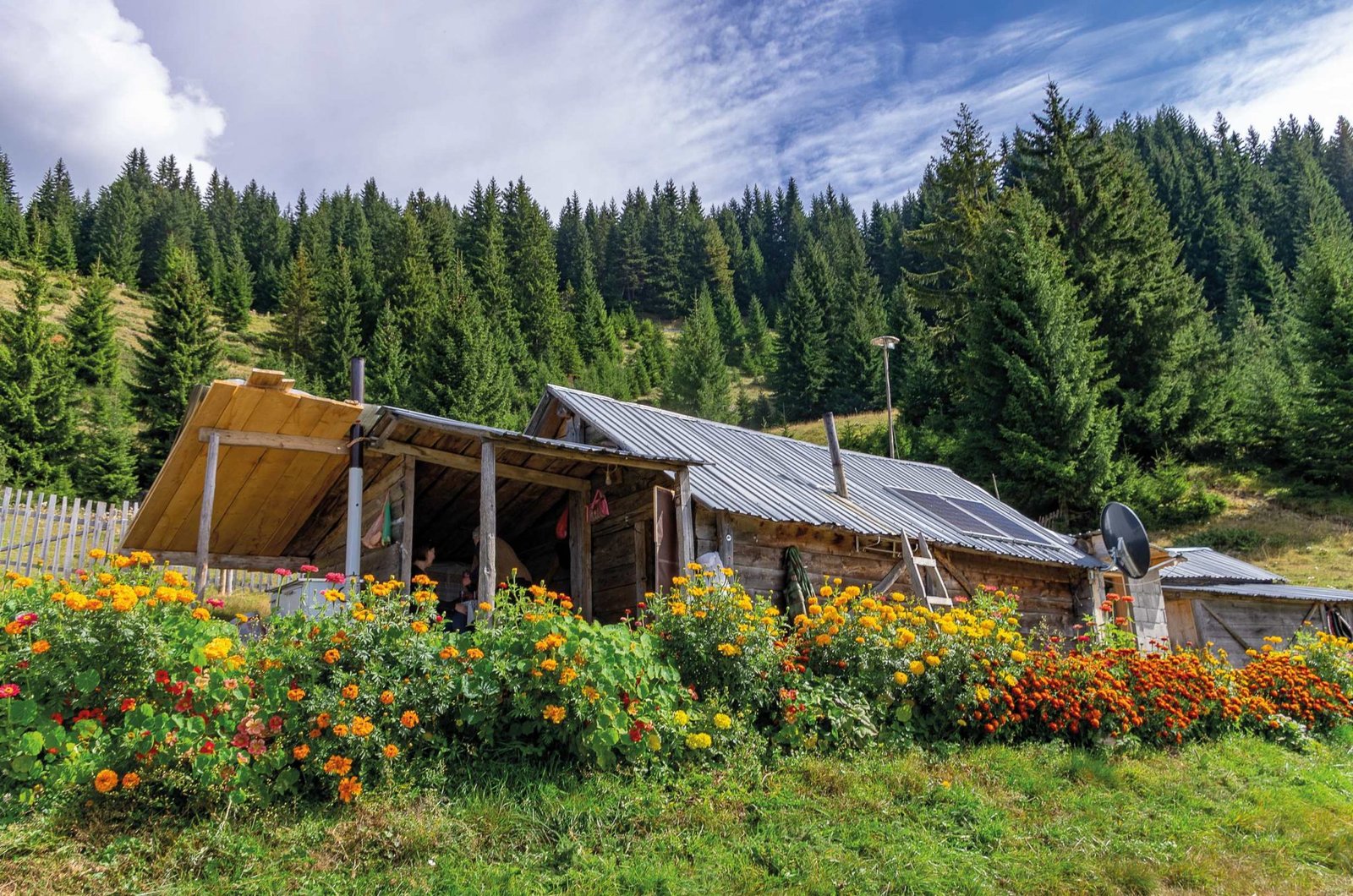Velika is a village of wondrous natural splendor and a deep historical heritage, positioned on the slopes of Čakor, between the Prokletije range, the Lim River, and the Rugova Gorge. With an expanse of 5,027 hectares, it is one of the largest villages in Montenegro, and its broad territory conceals a wealth of natural and cultural riches that await exploration and discovery. Velika has, through history, been a silent observer to many momentous events, and now it stands as an oasis of calm and unspoiled nature, ideal for those longing to escape the chaos of city life and feel the genuine spirit of a mountain settlement.
Far from the usual tourist trails, Velika provides tranquil landscapes, fresh mountain air, and a true rural existence. Whether you roam its hiking paths, explore its caves, or bask in the traditional warmth of the katuns, you’ll encounter nature in its purest state and gain experiences that will forever bind you to this region. The village is especially appealing to adventure enthusiasts and ecotourism lovers, offering a wealth of options for active leisure in untouched wilderness. We’ve chosen intriguing spots in this village for you, and if you visited them all, the route would span 24 kilometers. Our picks include historical sites, stunning viewpoints, curiosities, and natural wonders, each with a tale that further enhances your time in this area.
Velika was first mentioned in King Milutin’s charter from 1330-1331. During the Middle Ages, it served as a favored retreat and hunting ground for the Nemanjić dynasty. Later, it came under the rule of powerful feudal lords, such as the Balšić and Branković families, and gained strategic importance.
With the arrival of the Ottomans in the late 15th century, Velika became part of the Gusinje Sanjak. Life in the village was harsh, especially during wartime. Fearing Ottoman retaliation, many residents fled their homes in 1689-1690. Stability returned in 1857, when Velika became part of Montenegro with the formation of the Velika Captaincy.
The people of Velika showed great courage and loyalty throughout history, participating in major Balkan wars. During the Balkan Wars (1912-1913), the Velički Battalion distinguished itself in battles near Shkodra, while in World War I, locals defended the Čakor Pass. The most tragic event occurred on July 28, 1944, when the Skanderbeg and Prinz Eugen divisions massacred at least 428 civilians, including women and children.
The Velika School
The first school in Velika was founded in 1864 under extremely difficult conditions. At the time, boys often carried rifles along with their schoolbooks. After World War II, the school was rebuilt and modernized. Hundreds of locals earned university degrees, many pursuing doctorates and contributing to the development of their community.
Today, the Velika School houses the largest rural library in Montenegro, with over 8,000 books, making it a cultural and educational center for the region. Despite its turbulent past, Velika remains a symbol of resilience, unity, and the pursuit of a better future.
The memorial jumping event, “Jumps for Remembrance,” has been held since 2003 in honor of the prematurely lost lives of children from this region: Miroslav Mića Knežević, Julija Brudar, Olivera Maksimović, Filip Mikić, Komnen Turković, Boris Praščević, and Mihailo Petrović. This event takes place alongside the Čakor Games, gathering competitors and spectators from various areas on the banks of the Lim River. More than just a sports competition, these jumps serve as a heartfelt reminder of the importance of preserving memories and community bonds.
INTERVILLAGE OLYMPICS ON THE LIM RIVERBANK
Since 2016, every July 29th and 30th, the Čakor Games have been held in Velika, a traditional competition among teams from surrounding villages. More than a sporting event, these games—organized by “Klub Velika”—help preserve the spirit of unity and local customs. The competitions take place on the riverbanks, in the Lim itself, and on sand sports fields. Participants compete in bridge jumping, swimming, tug-of-war, and rope climbing, while races and skill-based games draw special attention. Each team consists of ten members, competing under the names of their villages.
Beyond the competitive spirit, music, entertainment, and local delicacies are an essential part of the event. Visitors enjoy barbecue, traditional bean stew, and cold beer, while a market showcases local products and handicrafts. The games attract an increasing number of participants and guests, strengthening the bond between generations and celebrating the region’s rich heritage. The local community plays an active role, making this event a true symbol of resilience, friendship, and cultural legacy.
If you want to participate in these games, contact the organizer, Klub Velika, at info@velika.me.
CHURCH OF SAINTS PETER AND PAUL
Ćafa can be reached from Gornja Ržanica or via this trail from Čakor. This mountain pass was once the only link between the village of Velika and the free part of Montenegro, making it a place of great historical significance.
In 2012, the Church of Saints Peter and Paul was built here in honor of the heroes of the Balkan Wars of 1912. During the battles for the liberation of this region from Ottoman rule, under the command of General Radomir Vešović, around fifty warriors bravely fell in combat, coming from:
• The Gornja Vasojević Brigade (commanded by General Vešović),
• The Velika Battalion (commanded by Major Kostadin Mikić),
• The Trepča-Šekular Detachment (commanded by Commander Milo Kenjić).
Near the church, there is a preserved military cemetery and monuments erected between the two world wars, commemorating the bravery and sacrifice of the warriors from this region.
The church was built at an altitude of 1840 meters, making it the highest-altitude church in Montenegro and Europe. Before its construction, this title was held by the Church of Saint Elijah on Carine, in the Komovi Mountains, which stands at 1800 meters above sea level.
Above the village of Velika begins the Borderline Heights Katun Road, a thematic route connecting Cakor with Hajla, running along the border between Montenegro and Kosovo. The katuns (mountain, transhumant settlements) are of crucial importance to the history and tradition of this region. These summer mountain settlements have historically been home to herders and shepherds, and today they remain living monuments of culture and tradition. They are used for grazing, and for centuries, herders have moved with their flocks to these temporary settlements to preserve the village grass for the winter months.
A visit to the Velika’s katuns allows visitors to experience authentic mountain life, where you can participate in herding activities, visit traditional katun huts, and enjoy homemade food prepared from fresh ingredients. In the katuns, you can sample local products such as fresh milk, cheese, skorup (cream), kacamak (cornmeal), or pies made from wild herbs.
These katuns, located at high altitudes, offer unforgettable views of the surrounding mountain ranges and valleys. They represent an important part of the cultural heritage of Velika, and Montenegro as a whole, as they have long been centers of mountain life and livestock tradition. A visit to the katuns is an opportunity to connect with nature and tradition of this region and experience the peace that comes with staying in these isolated, yet beautiful parts of Velika.
Learn more about katuns, services offered at katuns, and katun trails at katunroads.me.
Mount Čakor and its surroundings, part of the Dinarides, are home to rich biodiversity. The flora includes around 2,000 vascular species, encompassing endemics and medicinal plants. Among them are edelweiss (Leontopodium alpinum), protected on screes, alpine aster (Aster alpinus) with purple-yellow flower heads, and yellow gentian (Gentiana lutea), a medicinal plant with yellow flowers. Endemics such as Košanin’s houseleek (Sempervivum kosanini), Nikolina’s violet (Viola orphanidis subsp. nikolai), and Pančić’s valerian (Valeriana pancicii) adorn rocks and meadows. Medicinal species include yarrow (Achillea millefolium), wild garlic (Allium ursinum), and blueberry (Vaccinium myrtillus), while forests are dominated by endemic whitebark pine (Pinus heldreichii) and Macedonian pine (Pinus peuce). Poisonous plants like deadly nightshade (Atropa belladonna) with lethal berries and death cap (Amanita phalloides), the most toxic mushroom, demand caution.
The fauna is diverse: mammals include the brown bear (Ursus arctos), a mighty forest dweller, and the wolf (Canis lupus), a forest animal. Birds such as the capercaillie (Tetrao urogallus), an endangered highland resident, Bonelli’s eagle (Aquila fasciata), a canopy hunter, and hazel grouse (Tetrastes bonasia) enrich the skies, with over 180 species recorded. Reptiles like the adder (Vipera berus) and the endemic meadow viper (Vipera ursinii macrops) inhabit rocky areas, while amphibians such as the alpine salamander (Salamandra atra) with neurotoxic glands and yellow-bellied toad (Bombina variegata) with yellow spots thrive in wet zones. Fungi number around 2,500 species—edible ones like porcini (Boletus edulis), chanterelle (Cantharellus cibarius), and saffron milk cap (Lactarius deliciosus), but also toxic ones like Satan’s bolete (Boletus satanas).
Of Montenegro’s 415 protected species, 60 are found on Čakor and Prokletije, including 42 on the European Red List.
Toja’s Cave is located 4 km from the peak of Cakor, at an altitude of 1754 meters, making it one of the highest-altitude caves in Montenegro.
This geologically significant and still partially unexplored cave is set within the limestone massifs of Mount Mokra. Its long corridors, underground pools, and impressive rock formations testify to the powerful natural forces that have shaped this region.
HOW THE CAVE GOT ITS NAME
During the Balkan Wars in 1912, the Montenegrin army was constructing a road from Sjekirica through Mokra and Vaganica to Cakor, aiming to transport two large cannons for an offensive towards Metohija. During construction, the planned route encountered a rock formation beneath which the cave was located.
A soldier, Tomica Toja Brkovic, a member of the Velika Battalion, knew about the cave and warned engineers that blasting the rock could cause irreversible damage to this natural wonder. Initially, the engineers refused to alter the route, but after an intervention by General Radomir Vesovic, the decision was made to modify the road in order to preserve the cave.
As a result, the cave was named Toja’s Cave, in honor of the soldier who fought to protect it.
Today, Toja’s Cave remains one of Montenegro’s fascinating speleological sites, with its hidden corridors awaiting new explorers and adventure seekers.
*Listed are rural households that are members of our association and are featured on this site. For other accommodation providers in this area, check Google Maps or Booking.com.
From the activities you can enjoy here, we highlight:
• The Katun Trail and Visits to Katuns – Savor homemade fare and traditional meals like pies made of wild herbs and fresh cheese, while hearing tales of old customs and a lifestyle nurtured here across centuries.
• Hiking and Cycling – Discover the splendor of Čakor, Planinica, Mokra, and other nearby peaks around Velika, on foot or by bike, with incredible scenery and panoramic vistas.
• Forest Trail Walks – Wandering the woods near Velika has healing effects and boosts immunity, while also being a chance to enjoy silence and crisp air.
• Cave Exploration – Visit Tojina Cave with a guide and explore the speleological wealth of this region, hiding fascinating natural formations.
• Water Activities – Swimming and rafting on the Lim River or relishing rapids and mountain streams offer a perfect way to cool off during warm summer days.
• Čakor Games – Every year, in late July, Velika holds an inter-village contest with various events on the Lim River and sand, gathering locals and visitors from all regions.
• Foraging Wild Herbs and Mushrooms – Picking medicinal herbs or edible mushrooms on Čakor, or blueberries on slopes, is both useful and a calming way to connect with nature.
• Village Tasks – Take the chance to join in field and livestock work at katuns and feel authentic rural life, including milking cows, making homemade cheese, and other traditional chores.
Whether you’re a fan of active rest, an explorer of pristine nature, or someone simply seeking peace and quiet far from urban clamor, Velika will grant you an unforgettable experience and a chance to uncover the beauty of one of Montenegro’s most hidden gems.
PHOTOGRAPHY
Villages Included in the Project
Project
The Regional Development Agency for Bjelasica, Komovi, and Prokletije (RRA BKP), in collaboration with its partners—the Municipality of Peć (Kosovo) and the Regional Development Agency WEST (Kosovo)—implemented the project “Turning Our Villages into Tourist Destinations” under the IPA II Cross-Border Cooperation Program Montenegro – Kosovo 2014–2020.
Through this project, selected villages in the regions of Plav, Andrijevica, Berane, Bijelo Polje, Mojkovac, and Bar saw improvements in tourist infrastructure. The initiative established thematic rural trails linking natural and cultural attractions, installed signage, information boards, and markers for villages and locations, and supported certain rural households in enhancing their conditions for offering tourism services. As a result of the project, a joint promotional brochure was created, incorporating new thematic rural routes and local offerings, along with promotional video material.
Additional information about the village
TOURIS ORGANISATION PLAV
+382 51 250 151
toplav@t-com.me

